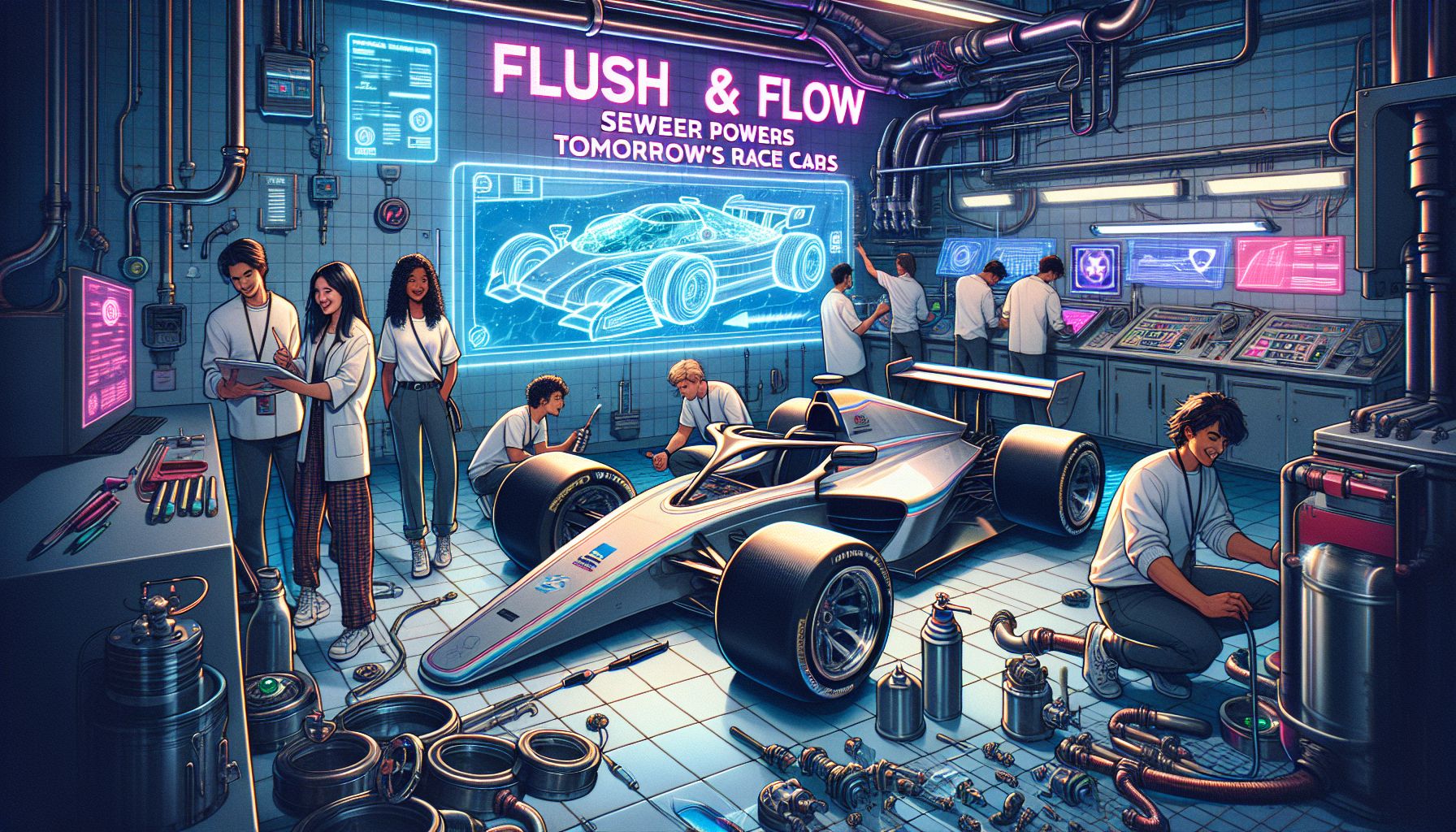Flush and Flow: Sewage Powers Tomorrow's Hydrogen Race Cars

Global, Thursday, 17 October 2024.
I’m revved up about this! Students at Warwick University have built a hydrogen-powered race car fueled by sewage. It’s not just fast; it’s a glimpse into a sustainable future where waste becomes a valuable resource. This innovation could change the game in motorsports and beyond.
From Waste to Race
Imagine zooming down the track, knowing that the fuel propelling you forward is sourced from the very waste we flush away daily. That’s precisely what the ambitious students at Warwick Manufacturing Group (WMG) have accomplished with their Waste2Race project. Their hydrogen-powered car, built with components both high-tech and humble, including recycled carbon fibre and a wing mirror made from beetroot waste, is on a mission to break land speed records[1].
A Sustainable Powertrain
What’s particularly fascinating is how the car is powered. The hydrogen fuel it uses is a byproduct of wastewater treatment technologies being trialled by Severn Trent Water. This method doesn’t just clean water; it also captures carbon and produces hydrogen, which fuels the car. It’s a triple win for sustainability[2].
Breaking Barriers
The Waste2Race team is aiming high, targeting records for the fastest standing and flying starts over a mile and a kilometre. With parts supplied by Ginetta, a specialist in racing and sports cars, the team isn’t just building a car; they’re crafting a narrative of innovation and eco-consciousness. The ingenuity of students, guided by industry experts, showcases the potential of sustainable technologies in real-world applications[3].
A Glimpse into the Future
This project is more than a speed test; it’s a prototype for the future of motorsports and beyond. As car manufacturers like Alpine and Toyota explore hydrogen as a viable racing fuel, the Waste2Race project stands at the forefront, proving that sustainable energy sources can power high-performance vehicles. It’s a thrilling nod to what lies ahead[4].
Beyond the Finish Line
WMG’s race car is set to be completed in 2025, but the impact of this work extends far beyond the track. By integrating sustainable materials and technologies, the project offers a blueprint for industries worldwide. The students’ efforts highlight how tomorrow’s engineers are learning to tackle today’s environmental challenges with creativity and innovation. It’s not just about speed; it’s about steering the world towards a greener future[5].
Bronnen
- www.automotivepowertraintechnologyinternational.com
- www.sciencedirect.com
- www.sciencedirect.com
- www.dupont.com
- www.sciencedaily.com